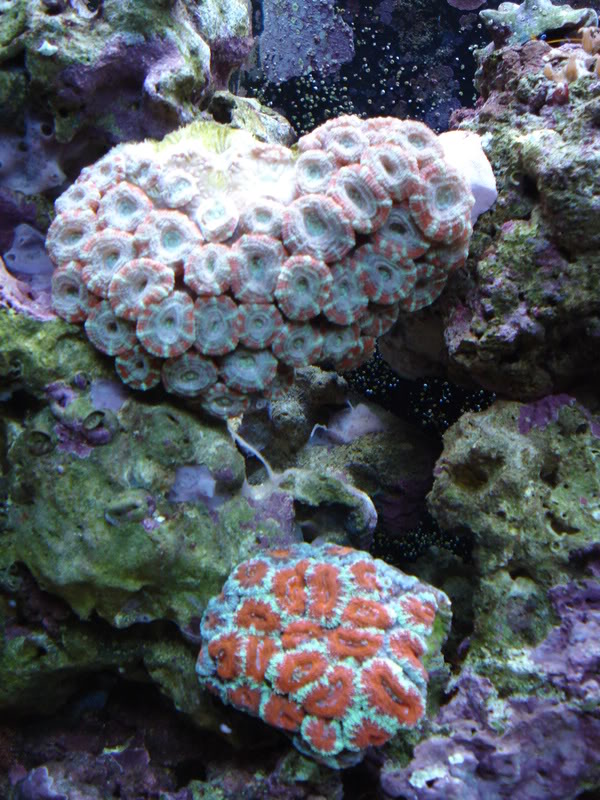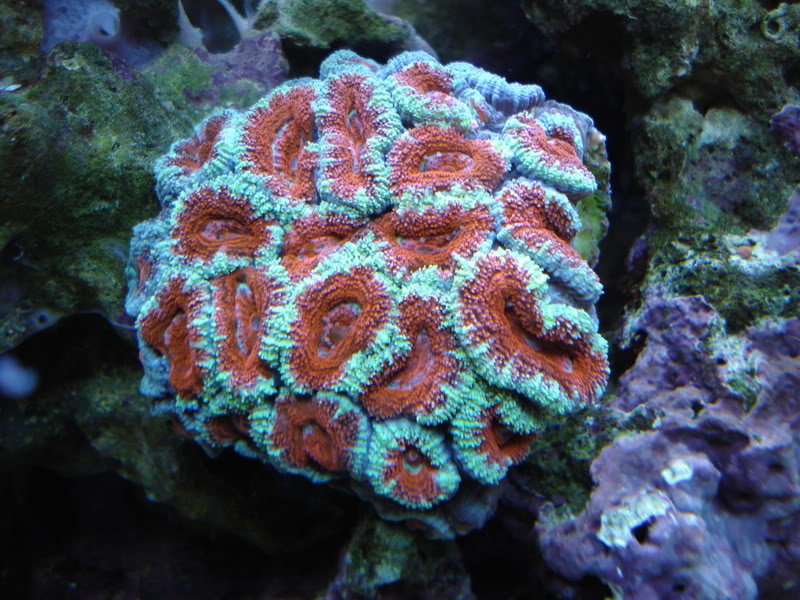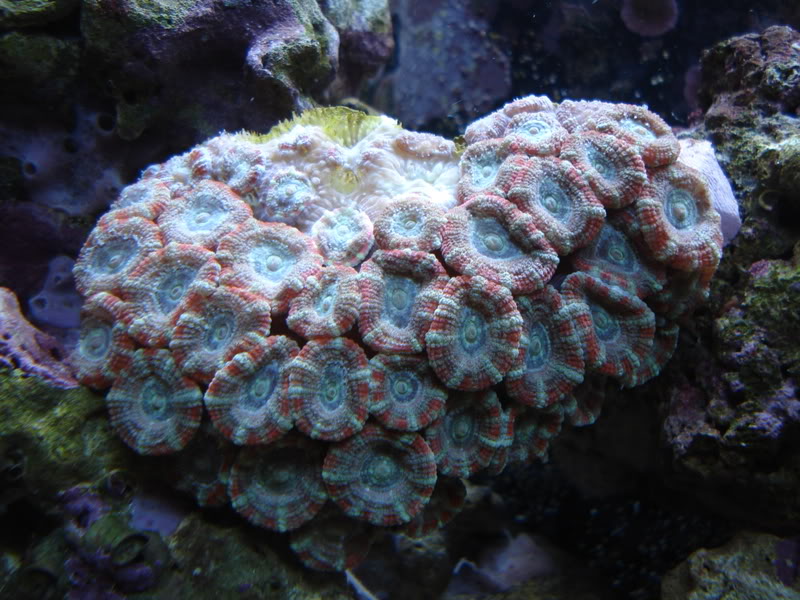Those are really nice colonies. They make my single polyp frags looks dismal

. I can't wait for the to grow...
You may want to check out the article
Good Lordhowensis!! by Eric Borneman and Anthony Calfo...
"
Acanthastrea is a relatively large genus in the family Mussidae, and contains 12-15 species. With the exception of
A. maxima, all of them may be found in the areas where coral collection for the aquarium trade occurs.
Acanthastrea species are not easy to distinguish from species in several other genera, and even families, of corals. They resemble other mussid corals, specifically
Micromussa,
Mussismilia,
Symphyllia and
Lobophyllia. They also resemble some of the many species in the family Faviidae that may be very difficult to tell apart....
In general, the mussids are corals characterized by large corallites with large teeth or lobes on their septa. The corallites generally have well developed columellae. In terms of knowing if a living specimen is a mussid, it is possible to see or gently feel the septa for the presence of these large and often serrated-looking teeth. If they are not present, it is quite possible that it is a faviid and not a mussid. But, actual identification requires examination of a skeleton devoid of tissue, and most mussids and faviids are covered with heavy tissue that nearly completely obscures their skeletons' diagnostic features.
If the coral is determined to be a mussid, species identification requires measuring its corallites across their diameter from wall to wall.
Micromussa, which looks very much like some species of
Acanthastrea, has corallites 8mm or less in diameter.
Acanthastrea generally has corallites smaller than
Lobophyllia, and most have corallites between 8-15mm in diameter. Several species, though, may have larger corallites and these are the ones most difficult to distinguish from
Lobophyllia and
Symphyllia."




